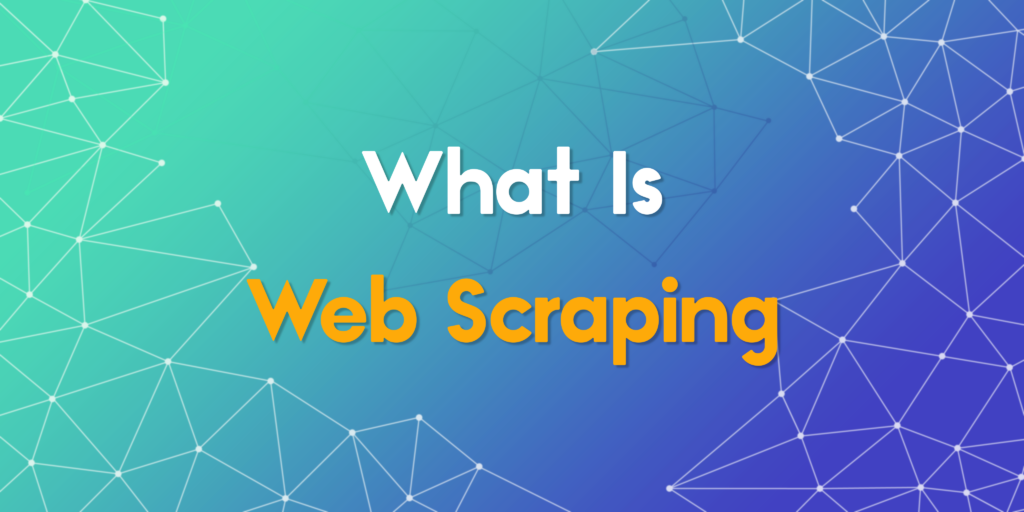What is Web Scraping?

What is web scraping and why is it gaining so much traction in tech, business, and data science communities? This article will take you through the complete picture of how web scraping works, the methods used, challenges you may face, and how tools like residential proxies with unlimited bandwidth play a key role. We will also examine formatting techniques, structure forms, and the legal side of scraping. Whether you are a beginner or looking to scale your scraping operations, this guide provides clear insights to help you stay efficient, compliant, and informed.
What is web scraping in practical terms
What is web scraping? It refers to the automated process of collecting data from websites using scripts, tools, or frameworks. The collected data is usually transformed into a structured format such as spreadsheets, databases, or JSON files for further analysis. For example, scraping can help track eCommerce prices, monitor social trends, gather leads, or aggregate job listings from multiple sources.
The power of web scraping lies in its ability to extract real-time data at scale. When done correctly, it eliminates the need for manual data collection and enables businesses to make data-driven decisions faster and more accurately.
Common web scraping methods and how they work
There are several web scraping methods, each with its strengths depending on the website architecture and content type. Let’s explore the most common ones:
- Static HTML scraping involves sending a request to a URL and parsing the HTML content using a selector-based parser like BeautifulSoup or Cheerio.
- Browser automation tools such as Puppeteer or Playwright are used for dynamic sites that load data with JavaScript.
- Direct access to hidden APIs or JSON endpoints, often found by inspecting network activity in developer tools, offers a cleaner data source.
- Using XPath or CSS selectors allows precise targeting of data fields even in deeply nested structure forms.
Each method requires different levels of setup and maintenance, especially when website layouts change over time.
Formatting and structure forms in scraped data
Scraped data is often unstructured and messy at first. Proper formatting and structure forms are essential to turn this data into something useful. Here are some best practices to follow:
- Normalize text fields by trimming white spaces and standardizing character encoding
- Convert dates and numerical values into a unified format for consistency
- Filter out unwanted HTML tags, inline styles, or script elements
- Organize scraped content into tables, key-value pairs, or JSON arrays
- Add metadata such as timestamps and source URLs for future traceability
Maintaining a consistent structure helps simplify downstream processing and ensures your dataset remains reliable over time.
Proxies related strategies for robust scraping
Many websites detect and block repetitive scraping patterns. That is where proxies related to scraping come into play. Proxies act as intermediaries that mask your IP and distribute your requests across multiple IP addresses, helping to avoid bans.
Residential proxies with unlimited bandwidth are especially useful. They use real IPs from actual devices, making your traffic look more organic. Their key benefits include:
- Reducing the risk of IP blocks or CAPTCHAs
- Allowing access to geo-restricted content
- Supporting concurrent requests at scale
Using rotating proxy pools ensures that your scraping activities stay undetected while maintaining efficiency and reliability.
Web scraping challenges and how to overcome them
Despite its usefulness, web scraping comes with its own set of challenges. Here are some common problems and recommended solutions:
- JavaScript rendering: Use headless browsers to interact with dynamic content that only appears after page load.
- Rate limiting: Spread requests using delays and proxy rotation to mimic human browsing.
- Captcha verification: Use captcha solving services or simulate valid browser headers.
- Frequent site changes: Build flexible scraping logic using regex or fuzzy matching.
- Data duplication: Store unique identifiers and validate records before insertion into your database.
With the right preparation, even complex scraping tasks can be handled smoothly and reliably over time.
Understanding the legal side of web scraping

Many users wonder about the legality of web scraping. The answer depends on the source, data type, and the jurisdiction. While scraping public content is generally acceptable, scraping behind login walls or personal data can lead to legal complications.
To stay on the safe side:
- Read and respect the website’s terms of service
- Check the robots.txt file for crawling permissions
- Never collect user-specific personal data without consent
- Use data only for ethical and legal purposes
When building large-scale scraping projects for commercial use, it is wise to consult a legal professional or use platforms that clearly allow scraping access.
How residential proxies with unlimited bandwidth enhance scraping
When high-volume scraping is required, residential proxies with unlimited bandwidth offer a huge advantage. Unlike datacenter proxies, residential proxies provide authentic IPs from real users. This makes the scraping traffic less likely to be flagged or blocked.
Unlimited bandwidth ensures that you can scale your scraping jobs without worrying about data usage caps. This is especially helpful for scraping large product catalogs, news archives, or social media platforms.
Combining these proxies with automation tools and smart request management gives you a highly resilient scraping setup capable of handling even the most sophisticated anti-bot defenses.
Final reflections on what is web scraping and its growing relevance
What is web scraping today? It is a key technology driving data acquisition in every field from business intelligence to academic research. With the explosion of online content, scraping allows teams to unlock valuable insights, automate workflows, and build data-powered products.
Mastering scraping involves more than just writing scripts. You need to consider data structure, formatting, performance optimization, and legality. The use of proxies related strategies like residential proxies with unlimited bandwidth is no longer optional but necessary for consistent results.
As websites evolve and data demands grow, web scraping will remain an essential skill. With the right tools and responsible practices, you can build scrapers that are not only effective but also sustainable in the long run.


